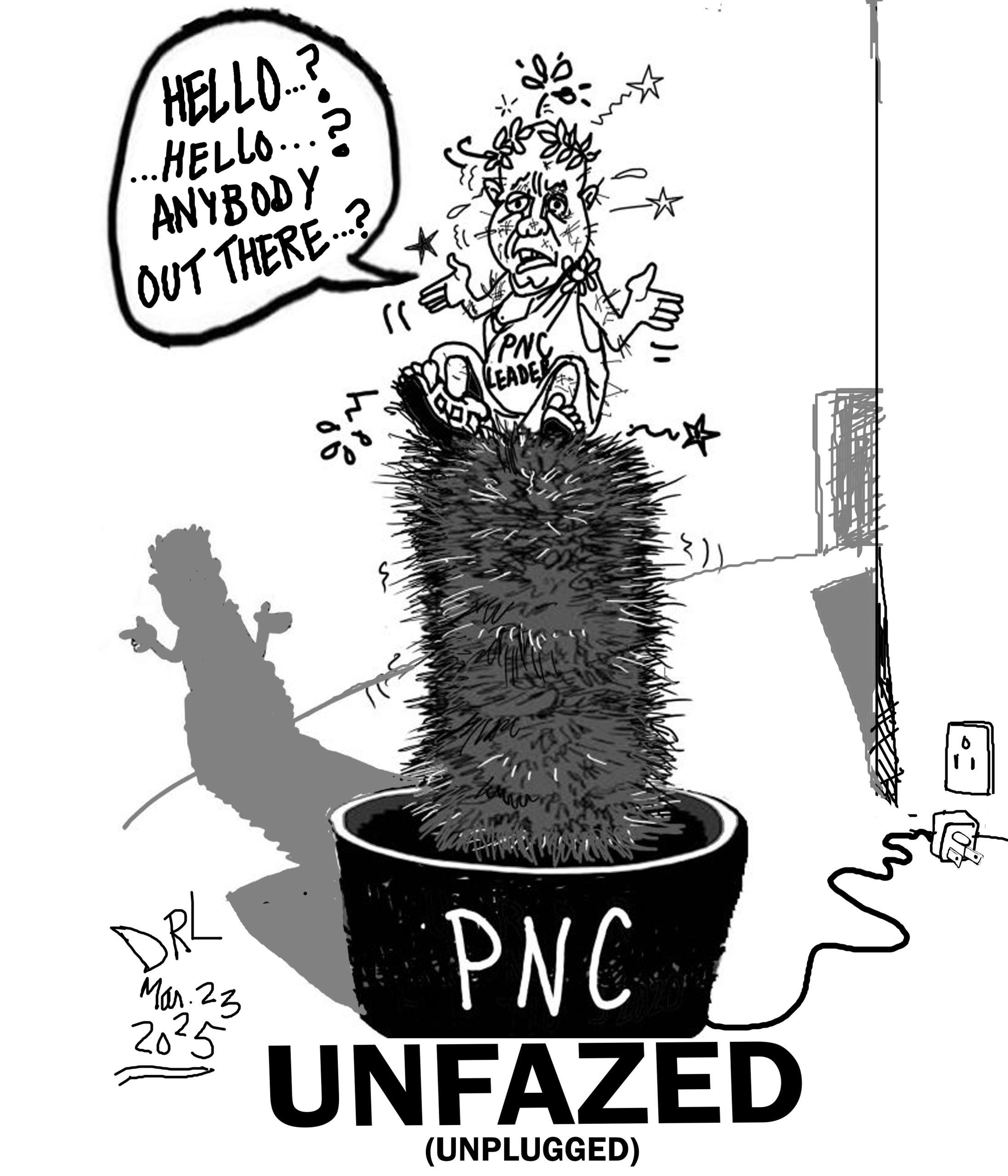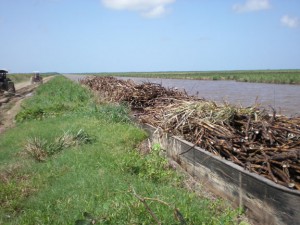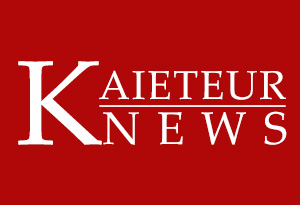Latest update March 28th, 2025 6:05 AM
Latest News
- “It will be a very bad day for Venezuelan if they attack Guyana or ExxonMobil”—Rubio declares
- Guyana gets info on U.S. tax evasion allegations against Mohameds, Mae Thomas
- US$35 injected into banking system to address foreign currency shortage—VP Jagdeo
- Citizens to stage protest today against lack of access to information in Guyana
- Guyana vows to stand with U.S.
IMF: Slow sugar modernization could expose Guyana to world-price volatility
Apr 15, 2010 News
The Executive Board of the International Monetary Fund (IMF) has concluded its annual assessment of Guyana’s economic health and found the country “weathered the impact of the global crisis” well, by regional and global standards.
However, the fund warned in its statement, continued modernization of the sugar sector and diversification of Guyana’s productive base are critical to sustaining growth.
IMF Directors, in its Executive Board Assessment, stressed the importance for the public sugar company to implement its recovery measures and ensure that the new plant at Skeldon becomes fully operational in the near term.
“Directors welcomed the authorities’ efforts to achieve sustainable long-term growth, including under the Low Carbon Development Strategy.”
IMF also commended the authorities’ prudent monetary policy aimed at maintaining low inflation.
The IMF consults annually with each member government. Through these contacts, known as “Article IV Consultations,” the IMF attempts to assess each country’s economic health and to forestall future financial problems.
This year, the consultations ended March 17.
3.3% Growth
“Newly released GDP series (re-based to 2006 prices) suggest that economic activity expanded by 3.3 percent in 2009, compared to 2 percent in 2008, largely on the back of a recovery in agriculture in the second half of the year along with continued strong gold production and robust activity in the non-tradable sector.”
This help mitigated the adverse impact of global and weather shocks on output in early 2009. End-year inflation fell to 3.6 percent from 6.4 percent as at the end of 2008, reflecting the softening in world commodity prices.
In 2009, the external current account deficit narrowed, and the international reserve position strengthened significantly. The current account deficit declined by 5 percent of GDP (to 8.5 percent of GDP), largely led by a reduction in imports, particularly of fuel.
This, together with strong official inflows (including concessional loans and grants, and the Fund’s Special Drawing Rights allocation) and steady short-term capital inflows by commercial banks — attracted to higher domestic interest rates — helped offset a decline in Foreign Direct Investment and raised Guyana’s gross international reserves to US$623 million by end-year (over 5 months of imports).
According to IMF, the nominal exchange rate remained stable, and the real effective exchange rate is assessed to be broadly in equilibrium.
“The impact of the crisis on the financial sector has been limited so far, although expansion in private sector credit has moderated to about 6 percent in 2009 (down from nearly 22 percent in 2008), reflecting both a deceleration in private sector credit demand, as well as tighter lending standards by the banking sector.”
Macroeconomic policies have remained prudent. Monetary policy tightened somewhat in 2009, supporting the decline in inflation and external stability. The fiscal deficit for the non-financial public sector declined to 3.3 percent of GDP (equivalent to 5.3 percent of old GDP) from 4.7 percent of GDP in 2008, on the back of higher-than expected revenues that supported the full execution of priority spending, including on infrastructure.
Public Debt
Guyana’s public debt has fallen from 93.1 percent of GDP as of end-2006 to 56.8 percent of GDP in 2009, assisted by debt relief operations and fiscal consolidation efforts.
“Guyana’s outlook remains positive in the near and medium term, although some important challenges remain. Growth is expected to benefit from the global recovery, the modernization of the sugar sector and the start up of investment projects, which could spur average growth to 4-5 percent in the medium term. The current account would widen somewhat in 2010 with the uptick in domestic demand and the increase in fuel prices, but would narrow gradually over time,” IMF said.
Nonetheless, the IMF Directors cautioned, challenges remain, particularly if the upturn in world economic activity were slower than envisaged; or if oil prices were to rise more sharply than projected. Slower progress than expected with the modernization of the sugar sector could also complicate this outlook, particularly in light of the recent phasing out of the preferential sugar prices by the EU, which will increasingly expose Guyana to world-price volatility.
Outlook
Upside potential is related to the full implementation of the LCDS, the eventual exploitation of Guyana’s oil reserves and the sound completion of key large public-private investment projects over the next few years.
The IMF Directors observed that the strong fiscal consolidation in 2009 provides space for a more gradual tightening over the near term to support infrastructure investment and growth. A cautious fiscal stance remains nevertheless warranted given remaining vulnerabilities.
“Directors therefore supported the authorities’ commitment to maintain prudent expenditure policies and to continue implementing structural reforms aimed at safeguarding fiscal sustainability. Directors commended the authorities’ intention to continue seeking highly concessional terms when contracting debt and to minimize fiscal risks from public investment and public-private-partnerships (PPPs), paying close attention to international best practices.”
Looking forward, some Directors supported a gradual approach toward greater exchange rate flexibility, while others considered that a more detailed assessment of the advantages and disadvantages of greater exchange rate flexibility in Guyana is needed.
The Directors noted that the financial system has not been directly affected by the global crisis and welcomed ongoing efforts to further strengthen supervision and enhance the banking system’s resilience.
The IMF Executive also encouraged the government to require banks to increase provisioning, monitor asset quality, and further tighten the legislation on the exposure to large borrowers and related-party lending. They commended the recent amendment to bring insurance supervision under the purview of the central bank, and recommended gradually bringing all non-bank financial institutions under a similar regulatory perimeter.
It is expected that the next Article IV consultation with Guyana will be held on the standard 12-month cycle.
Share this:
- Click to print (Opens in new window)
- Click to email a link to a friend (Opens in new window)
- Click to share on Facebook (Opens in new window)
- Click to share on WhatsApp (Opens in new window)
- Click to share on Twitter (Opens in new window)
- Click to share on Pinterest (Opens in new window)
- Click to share on Pocket (Opens in new window)
- Click to share on Tumblr (Opens in new window)
- Click to share on Reddit (Opens in new window)
- Click to share on LinkedIn (Opens in new window)
Related
Similar Articles

The Glenn Lall Show|| March, 17th, 2025
Follow on Tik Tok @Glennlall
THE BLUNT OF THE DAY

Sports
Mar 28, 2025
-Milerock face Bamia, Hi Stars battle Botafago, Ward Panthers match skills with Silver Shattas Kaieteur News- With a total $1.4M in cash at stake, thirteen clubs are listed to start their campaign as...Features/Columnists
The PPP has started the intimidation
Peeping Tom… Kaieteur News- In politics, as in life, what goes around comes around. The People’s Progressive Party/Civic... more
Publisher’s Note
Freedom of speech is our core value at Kaieteur News. If the letter/e-mail you sent was not published, and you believe that its contents were not libellous, let us know, please contact us by phone or email.
Feel free to send us your comments and/or criticisms.
Contact: 624-6456; 225-8452; 225-8458; 225-8463; 225-8465; 225-8473 or 225-8491.
Or by Email: glennlall2000@gmail.com / kaieteurnews@yahoo.com
Weekend Cartoon
















